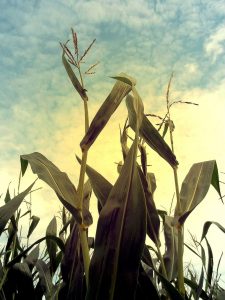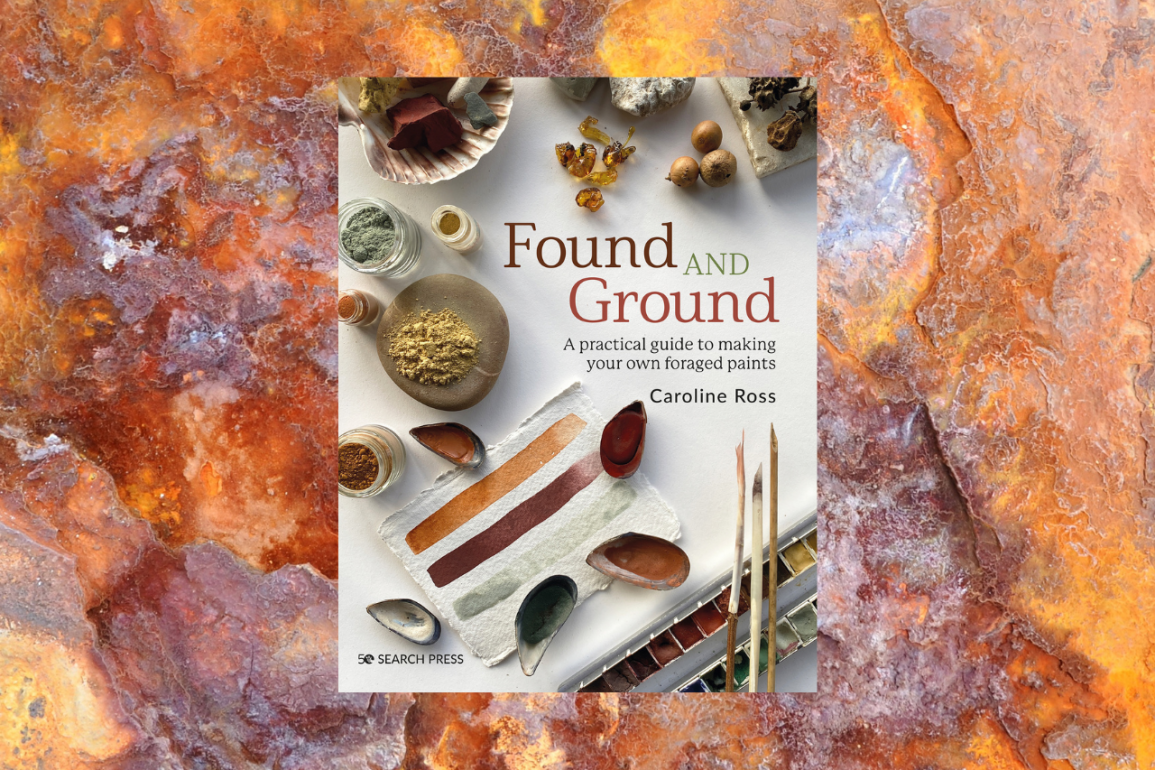Found and Ground by Caroline Ross – A practical guide to making your own foraged paints.
Author, Caroline Ross teaches artists how to develop their own natural paints using wild materials derived from the earth itself in her book Found and Ground.
Historians confirm that foraging for ingredients to make colour was general practice. In this modern day, we are accustomed to a world filled with a highly saturated rainbow of printed and painted colours that synthetic pigments, which allows almost any colour we can imagine to easily be mixed or matched. Before the widespread use of petrochemicals, and the novel dyes and pigments they made possible, certain colours were extremely rare, difficult to obtain or expensive and some were found only in one geographical area.
Besides a few exceptions almost all colours used in art and crafts, from cave paintings to the ceiling of the Sistine Chapel, were naturally derived. Pigments and dyes can be obtained from a vast array of natural materials including plants, rocks, shells, animals, insects, gemstones, lichens, and fungi.
In Found and Ground, Caroline concentrates on creating colour from the earth itself: the rocks, clay, and soil in your locale. The palette you create will be unique to your area, your eye, and your tastes, and won’t look like anything you could buy off the shelf. She shares her sustainable approach to painting and passion for the natural world, as well as offering a plastic-free alternative to traditional acrylic paints, the book covers how to make a series of simple natural paints such as watercolour, gouache, tempera, and glair. It also includes innovative vegan ‘egg paint’ alternatives.
You will find exploring the world around you, life-affirming and fascinating as you gain new skills with your hands and take a closer look at what is just outside your door.
Here are several reasons why you might choose to use your own forage paints:
Sustainability: Foraging for natural materials to make your own paints reduces the need for synthetic pigments that may have negative environmental impacts during their production. By using materials found in nature, you can create a more sustainable and eco-friendly art practice.
Connection to nature: Creating paints from natural resources allows you to connect more closely with the natural world. It offers an opportunity to explore your local environment, learn about different plant species, and appreciate the beauty and diversity of nature.
Unique colours: Foraged paints can provide you with a wide range of unique and interesting colours that may not be easily replicated with commercially available paints. Each plant species has its own pigments, and experimenting with different combinations can result in unexpected and captivating hues.
Personal expression: What better way to infuse your artwork with a deeper personal touch? Making your own shades, adds a sense of authenticity and uniqueness to your creations, as the pigments are derived directly from your surroundings and experiences.
Found and Ground explores how Caroline uses wild and ancient materials to make artworks from small illustrations to large murals. She also teaches life drawing and shows people how to make the materials she herself uses. Having spent decades indoors in art and recording studios, and with an MA in Painting from the Chelsea School of Art, Caroline spends as much as possible of her life outdoors, immersing herself in nature as she sources her materials, and makes her work.
If you’re interested in making your own forage paints, there are a few different approaches you can take. Here’s a simple method using natural materials:

Ingredients:
Foraged materials (such as flowers, leaves, berries, or other plant matter)
Water
A mortar and pestle or blender
Strainer or cheesecloth
Containers for storing the paints.
Instructions:
- Start by collecting the foraged materials you want to use for your paints. Choose plants that have vibrant colours and are non-toxic. Be mindful of sustainability and avoid damaging the environment while foraging.
- Once you have your foraged materials, clean them by gently rinsing them with water to remove any dirt or debris.
- Separate the plant matter from any stems or branches and roughly chop it into smaller pieces. This will help release the pigments during the extraction process.
- Place the chopped plant matter into a mortar and pestle or blender and grind it into a paste. Add a small amount of water to help with the grinding process if needed.
- Once you have a paste-like consistency, transfer it to a container and add enough water to cover the paste. Stir well to ensure the pigments are fully incorporated.
- Let the mixture sit for a few hours or overnight to allow the pigments to infuse into the water.
- After the infusion period, strain the mixture using a strainer or cheesecloth to remove any solid particles. This will give you a smoother paint consistency.
- Transfer the paint into individual containers, such as small jars or pots, for storage and easy access.
- Your forage paints are now ready to use! Use brushes or other painting tools to apply them to paper, canvas, or other suitable surfaces.
Keep in mind that foraged paints may not have the same longevity or vibrancy as commercially produced paints. They may also fade over time, especially if exposed to sunlight. Experimentation and exploration are key in creating your own unique forage paints.
Enjoy the process and embrace the natural beauty of the materials you discover!
For more information and to purchase the book Found and Ground ISBN 13/EAN: 9781800920996 visit Search Press here
Lilly Light


